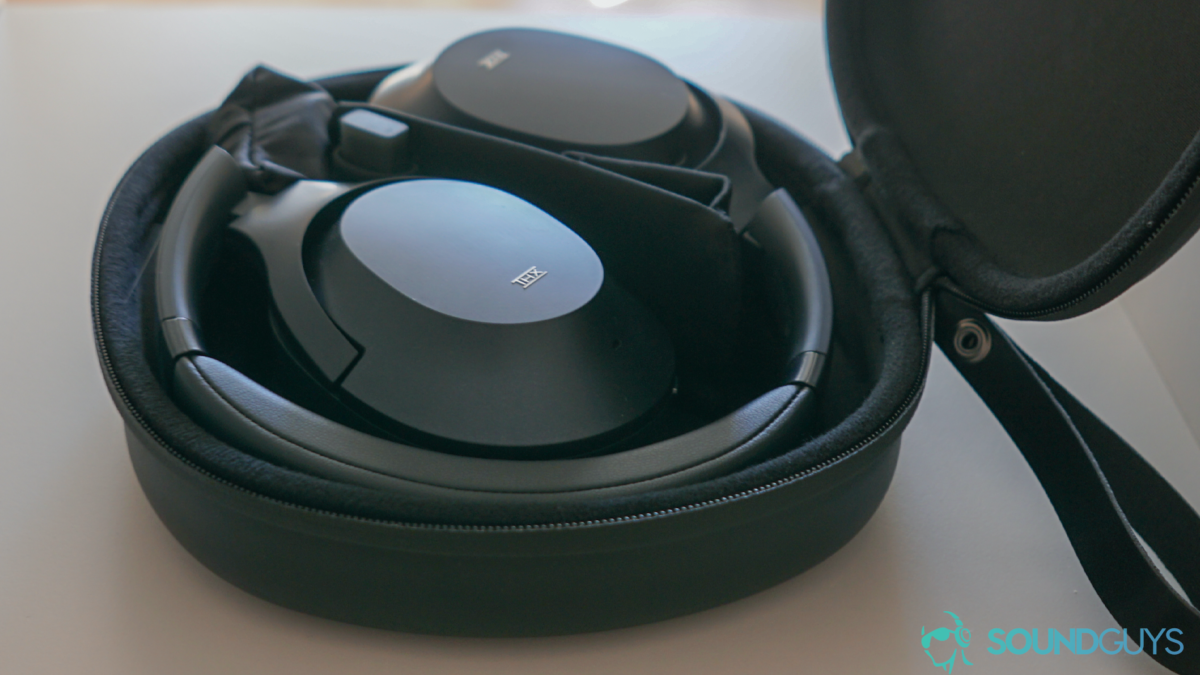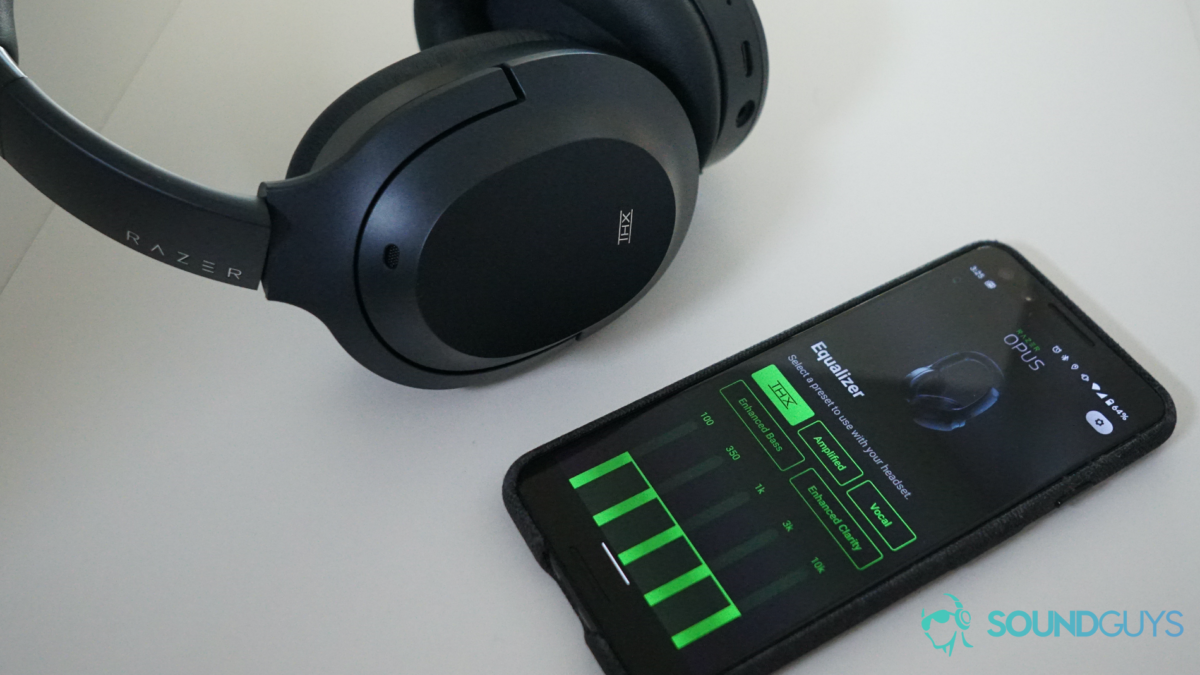Razer has been one of the biggest names in gaming peripherals for as long as there's been a market for them, but in the last few years the company has branched out. The Razer Phone and it's successor were gaming focused smartphones, but they didn't have all the trappings of a Razer gaming headset. Gone was the bulky design, gaudy LED lights, and aggressively edgy (ish) name. With the Razer Opus, the company is aiming for something similar in the headphone space.
These aren't gaming headphones. They're designed to fit in with the high-end Bluetooth headphones of the day. In fact, they look almost identical to the Sony WH-1000XM3 and WH-1000XM2. Are they more than a cheap(er) imitation?
Who are the Razer Opus for?
- Commuters looking for noise-cancelling headphones like the WH1000XM3 without breaking the bank.
- Everyday listeners who want something that can handle high quality codecs like AAC and aptX.
What is it like using the Razer Opus?
As I mentioned above, the Razer Opus is basically a regular pair of wireless Bluetooth headphones. They're made mainly of plastic, with leatherette-covered pads on the headphones and headband. The headphone hinges swivel to lie flat, and fold to fit into the included carrying case. They may look a little derivative, but when the source material from which they're derived is something as good as Sony's flagship headphones, it's hard to complain too much.
The headband offers a solid amount of tension, and I never felt like the headphones were about to fall off my head, even on extended walks and runs. That said, I wouldn't recommend going for a run with these (or perform any strenuous exercise), as the leatherette really builds up heat and sweat became an issue.
While achieving a decent seal was pretty easy, the Razer Opus are rather uncomfortable when wearing glasses. Given that Razer offers solutions like carved eyewear channels in most of its gaming headsets, it's pretty disappointing not to see that here.


The Razer Opus comes with a 3.5mm TRRS cord, USB-C charging cord, a USB-A adapter, and a 3.5mm splitter.
While the form of these headphones are clearly inspired by Sony's cans, the Razer Opus really makes its own strides on the price. For $200, you get most of what you'll find in the more expensive original after which these are modeled: Bluetooth 4.2, USB-C charging, AAC and aptX support, and more. Luxuries like touch controls or wider codec support are missing, but if you've got to cut something to reach a lower price, it's probably what many people would pick.
The Razer Opus sports the usual on-ear controls you'd expect, with buttons for power, noise cancelling, volume, and media playback. Sure, it isn't as flashy as other offerings, but it's straightforward and it works well.
Pairing the device is a little bit of a pain. There's no support for Bluetooth multipoint, and to enter pairing mode, you have to hold down the power button for longer than it takes the LED indicator to start flashing. If you're not listening for the pairing noise in the headphones, expect a lot of rejected pairing notifications.
Of course, if you're one of the lucky few with a smartphone that still has a 3.5mm headphone jack, the Opus also comes with a 3.5mm cord. You can use this connection after the headset's battery dies, too. Speaking of which, we found the Razer Opus lasted 27 hours, 41 minutes on a single charge with active noise cancelling (ANC) turned on. With ANC off, you're likely to get even better mileage.
Noise cancellation is good, but not the best
The headset sports a hybrid noise-cancelling system, which does a relatively good job covering the meager isolation the headphones otherwise achieve. The attenuation isn't as significant as with headphones like the Sony WH1000XM3 or the Shure AONIC 50, but the sounds of city foot traffic are rendered half as loud as they'd usually sound. Walking around with ANC turned on, I never felt any need to increase the volume to compensate for outside noise — ultimately, that's what really makes a difference in avoiding noise-induced hearing loss over time.
How does the Razer Opus sound?
The Razer Opus has a neutral frequency response up to around 2000kHz, which means it's great for casual listening, but maybe not for the die-hard audiophile. Razer worked with THX to create a certified audio profile using the Opus app, which you can use to switch between EQ presets, including Amplified, Vocal, Enhanced Bass, and Enhanced Clarity, on top of the THX setting (which is the default setting). These profiles definitely make some pretty substantial changes, but I would have liked the option to create my own EQ.
The slight boost in the sub-bass range isn't enough in most cases to really throw off the balance of a song, but it can make bassier parts particularly noticeable and some vocals less clear. However, change the profile in the Opus app to the Vocal preset, and these issues go away.
While the audio output is great, the Razer Opus' microphone really isn't. It's got a very significant de-emphasis in the bass and mid range, and some slight de-emphasis in the high range, too. This means people with deeper voices will sound a little like they're coming out of a tin can sometimes, and sibilant sounds (F, S, and SH sounds) might not come through as clearly. As with a lot of internal microphones, clarity also takes a pretty big hit here. Listen for yourself:
Should you buy the Razer Opus?
If you're looking for an experience similar to the best on the market, but for less cash, sure. The Razer Opus is comfortable, lightweight, and sturdy. It offers largely accurate audio — a feat in and of itself, given Razer's historically bass-y leanings. Its noise cancelling isn't best in class, but it offers a decent amount of attenuation. The battery life isn't the best you'll find, but it's no slouch. If there's any single real disappointment it's the microphone, which sounds flat-out bad. If your budget is $200 and not a penny higher, this will cover all the bases easily.
If you've got a more permissive budget, springing for the WH-1000XM3 is probably still your best bet. Sony's headphones do just about everything better, especially making phone calls. At time of writing, they're also going for $278 (more than a 20% discount), so your budget doesn't even need to be that much more permissive.
However, you won't be disappointed with the Razer Opus as a solid first foray into noise cancelling headphones. Getting these is like dipping a few toes in at once — it's not the whole foot, but enough to make a respectable exploratory effort.
from Android Authority https://ift.tt/2ZEeb4m
via IFTTT





No comments:
Post a Comment